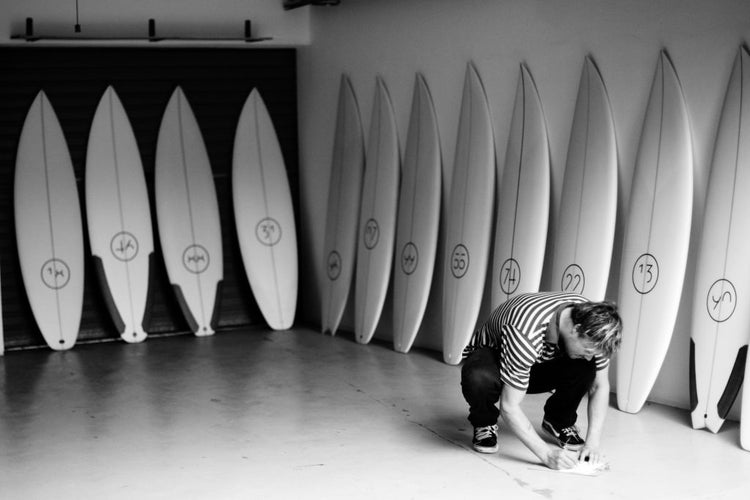
What Surfboards do the Pros use?

Title: Unveiling the Art of Surfboard Selection: A Glimpse into the Choices of Professional Surfers
Introduction:
Surfing is a dynamic and exhilarating sport that requires skill, balance, and the right equipment. Among the most crucial pieces of gear for any surfer is the surfboard. Aspiring surfers often find themselves wondering about the surfboards that professionals use and what sets them apart. In this blog post, we'll delve into the fascinating world of professional surfboards, exploring the diverse choices that top surfers make to ride the waves with style and precision.
- Customization is Key:
One of the first things to understand about professional surfers and their surfboards is the level of customization involved. Unlike mass-produced boards, professionals often work closely with shapers to create a board tailored to their individual preferences, skill level, and the specific conditions they surf in. This level of customization allows them to optimize their performance on the waves.
- Variety in Shapes and Sizes:
Professional surfers have a quiver of boards suited for different conditions. The choice of board depends on factors such as wave size, shape, and the surfer's own style. Shortboards are commonly preferred for high-performance maneuvers in smaller waves, while longer boards or guns are chosen for larger, more powerful waves. The variety in shapes and sizes allows professionals to adapt to diverse surf conditions around the world.
- Materials Matter:
The materials used in a surfboard significantly impact its performance. Professional surfboards often incorporate advanced materials such as carbon fiber, epoxy resins, and high-quality foam cores. These materials provide a combination of strength, durability, and lightweight characteristics, allowing surfers to push the limits of what is possible on the waves.
- Fins and Fin Configurations:
Fins play a crucial role in a surfboard's maneuverability and control. Professional surfers experiment with different fin setups to achieve the desired feel in the water. Thruster setups (three fins) and quad setups (four fins) are common configurations, each offering a unique blend of speed, stability, and maneuverability. The choice of fins can vary based on the surfer's style and the conditions they are riding in.
- Technology and Innovation:
The world of surfboard design is constantly evolving, driven by technological advancements and innovative ideas. Professional surfers often embrace cutting-edge designs and materials to gain a competitive edge. This may include incorporating concave bottoms, channels, and other features aimed at enhancing speed, control, and responsiveness.
- Brand Loyalty:
While professional surfers have the flexibility to choose custom shapes and designs, many establish strong relationships with particular surfboard brands. These partnerships often go beyond the board itself, extending to wetsuits, accessories, and even collaborative design projects. Brand loyalty is a testament to the trust professionals place in the quality and performance of their chosen equipment.
The most ridden shortboards on the WSL tour are from:
- Lost Surfboards
- Channel Islands
- JS Industries
- Pyzel
- Sharp Eye
- Pukas
Conclusion:
In the dynamic world of professional surfing, the surfboard is not just a piece of equipment but an extension of the surfer's skill and style. The choices made by professional surfers in terms of customization, shapes, materials, fins, and technology reflect a commitment to pushing the boundaries of what can be achieved on the waves. Aspiring surfers can draw inspiration from these choices, understanding that the perfect surfboard is a personalized tool that complements the individuality of each surfer's journey.

